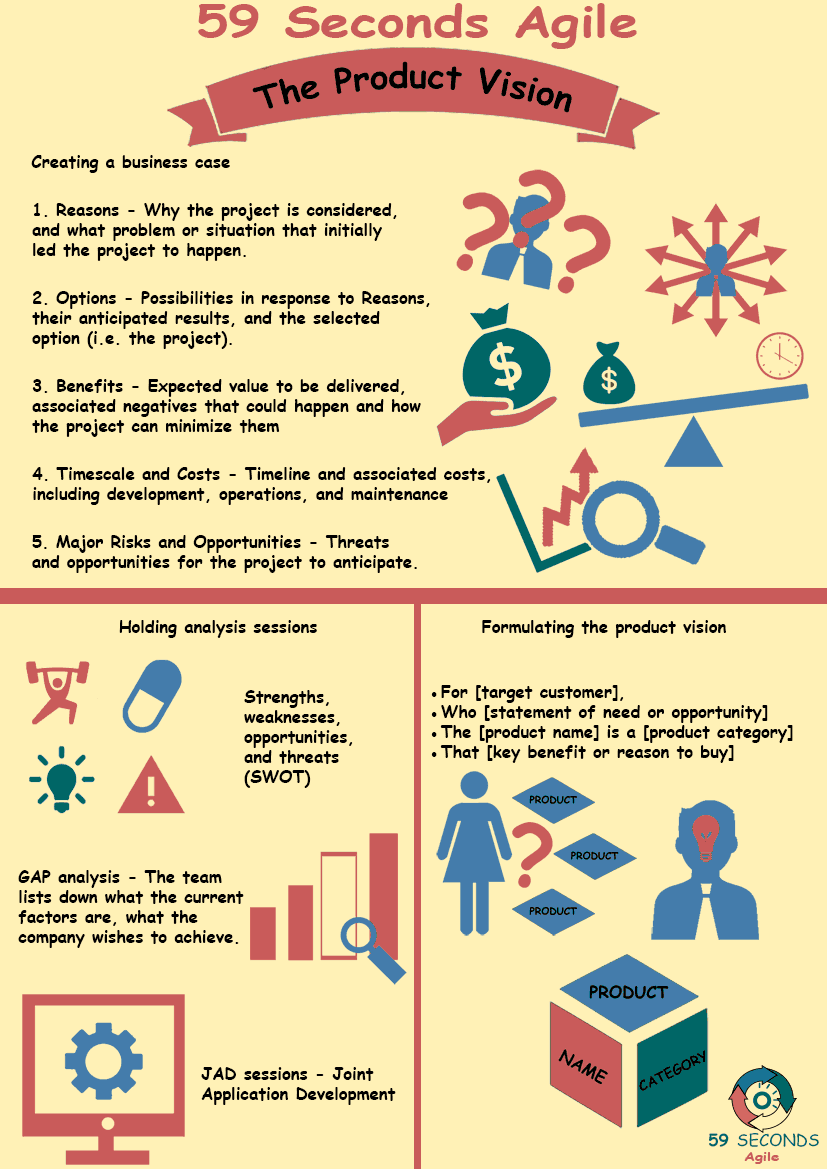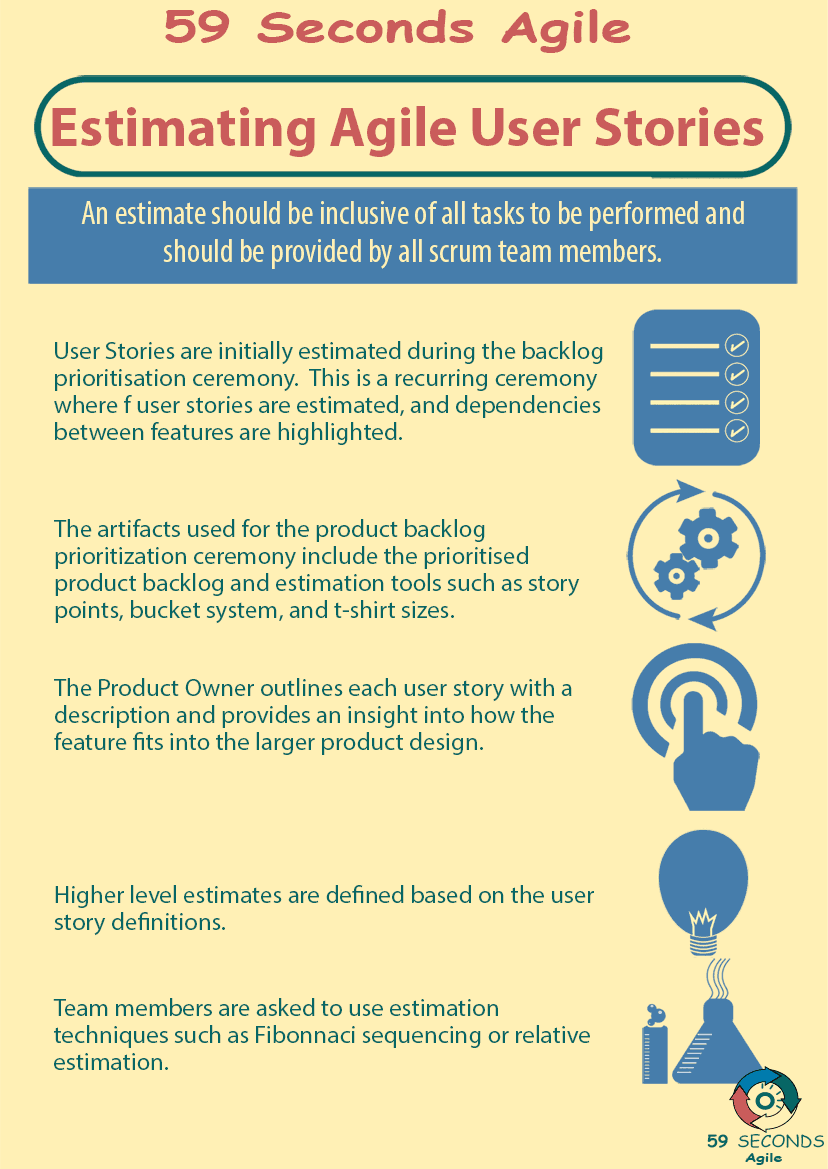This article looks to discuss ‘Writing an Agile Project Vision’ and covers the Scrum Development Team role within the process. Starting with the project business case and covering the benefits for the developers.
The Agile Fundamentals
A 59 Seconds Agile Video Animation
Writing an Agile Project Vision for the Scrum Development Team
A 59 Seconds Agile Article
The Product Vision is a key part of Agile software development. It defines the overall direction of the project. Similar to goals, it expresses the sort of desired end result for a software product. However, unlike goals, the product vision is less precise and more abstract. Instead of distinct and quantifiable conditions, it gives a more general idea of where the product eventually needs to be.
If the product vision is so abstract and generic, what benefit does it give to the Scrum team? First and foremost, it motivates the team. Instead of going in every day and working on each menial task, the team is working towards a common goal. The product vision is what everyone is building to. Everything the team does can be tied back to how it gets the current product closer to the product vision.
Writing an Agile Project Vision: The Project Business Case
Similar to the product vision, the project business case is another way to describe a project. Where the product vision is more of a goal, the project business case is more of a reason. It is justification for why the project began. For most projects, the business case describes the need that the project is attempting to address.
A good project business case covers several facets of a project. First, it covers the benefits of a project. Since it seeks to address a need, the benefits will be how it accomplishes that. In addition to the benefits, the project business case should cover the costs of a project. Nothing is free, and it is important to consider whether the costs outweigh the benefits. With any project, there are risks, and the project business case attempts to identify where these risks are for a project. Analyzing where risks are given the Scrum team more of an opportunity to anticipate them. And finally, the project business case looks at the reason for a project. Where the benefit is how a problem will be fixed, the reason is why the problem needs to be fixed.

Writing an Agile Project Vision: Benefit to Developers
So far, both the product vision and project business case seem like more high-level documents. What does the Scrum team care about the product vision? And more precisely, how does the project business case benefit the developer role?
For developers, the product vision represents the “big picture.” It is a definite indicator of the intended end result. The project business case explains why the Scrum team is doing what they’re doing. While this is true for all members of the Scrum team, it has specific benefits for the developers.
In practice, every bit of work contributes to the product vision. Keeping the product vision in mind reduces frustration and work fatigue. Developers are in charge of creating every little bit of the product. Sometimes, these small bits and pieces seem pointless. It can be disheartening for developers to work on small tasks for weeks or months and not see definite fruits of their labor. With the product vision, developers know that every small piece is contributing to a bigger whole. This often gives developers the motivation to continue working on seemingly small tasks.
Besides reducing work fatigue, the product vision puts the backlog in perspective. Every task in the product backlog gets the software closer to the product vision. Each task finished is another step closer to completion. While the product backlog may seem endless in early sprints, it does have a logical finish. Keeping this in mind helps developers realize that they will eventually complete the product.
Prev <— Continue Reading —> Next
Learn More: Estimating and Planning User Stories
User Stories Applied
A 59 Seconds Agile Book Review
User Stories Applied by Mike Cohn is one of our favourite books on Agile User Stories. The book starts with an overview into user stories, and details what a user story is and the different aspects of them. He then discusses how to go about writing a user story, and provides details of the INVEST criteria that can be used to determine if the story is meeting all of its objectives. Next Mike gives an in depth discussion of who user stories are written for and where to begin when gathering the details for them. The book then discusses acceptance testing user stories, including how to go about specifying these criteria and the responsibilities of the development team and customers during this process.
Prev <— Continue Reading —> Next
Learn More: Estimating and Planning User Stories
Estimating Scrum User Stories
A 59 Seconds Agile Infographic

Prev <— Continue Reading —> Next
Learn More: Estimating and Planning User Stories
Our Favourite Agile Books
We found these books great for finding out more information on Agile Scrum:

